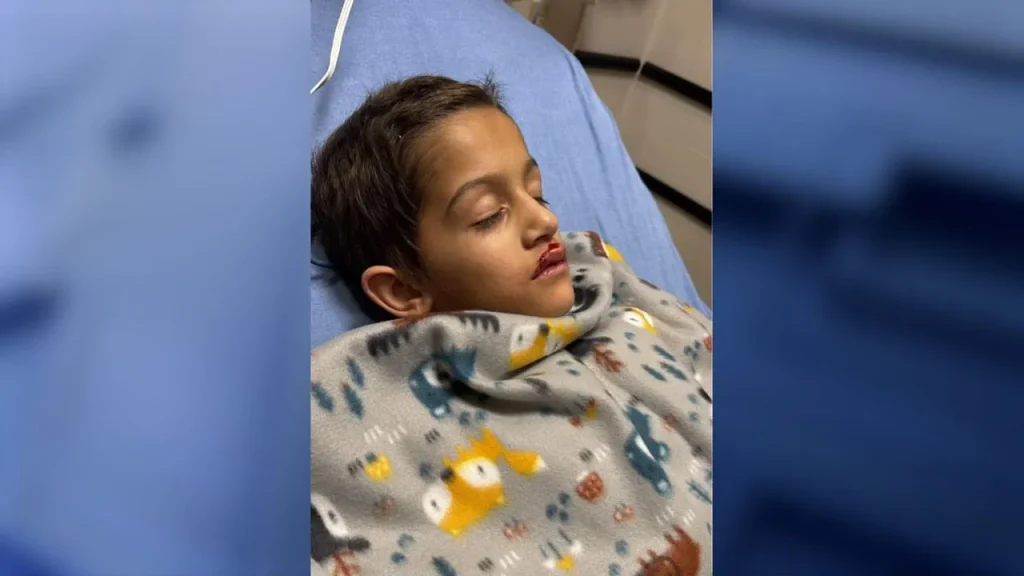The enchanting allure of a holiday drone light show at Orlando’s Lake Eola Park took a dark turn on Saturday night when a cascade of malfunctioning drones plummeted from the sky, injuring a 7-year-old boy amidst the startled crowd. The incident, which abruptly halted the festive display, has prompted an investigation by the Federal Aviation Administration (FAA) and sparked concerns about the safety regulations surrounding drone light shows.
Alexander, the young victim, bore the brunt of the mishap when one of the brightly lit drones struck him directly, rendering him unconscious. His parents, Adriana Edgerton and Jessica Lumsden, recounted the terrifying moment, describing how the green-lit drone veered off course and targeted their son as they attempted to dodge the falling devices. The impact resulted in a chest injury requiring the young boy to undergo open heart surgery, a testament to the potential dangers inherent in these aerial displays.
As hundreds of drones danced in the night sky, preparing to form intricate patterns of light, something went amiss. Videos captured by onlookers depict the drones erratically departing from their programmed paths, plummeting towards the earth in a chaotic descent. The festive atmosphere quickly devolved into confusion and fear as spectators scrambled to avoid the falling drones. The city of Orlando promptly cancelled the show, issuing a public apology and citing “technical difficulties” as the cause of the malfunction.
The drone show vendor, Sky Elements Drones, expressed deep regret over the incident and pledged full cooperation with the FAA investigation. They emphasized their commitment to safety protocols and their desire to understand the root cause of the malfunction. Their statement highlighted the significant scale of their operations, having presented drone shows to millions of viewers annually, and underscored their dedication to maintaining the highest safety standards as outlined by the FAA.
The FAA investigation will focus on unraveling the technical glitches that led to the drone malfunction. Drone light shows, characterized by the synchronized flight of numerous drones, are subject to strict FAA regulations. These regulations typically necessitate a waiver for operators seeking to fly more than one drone simultaneously, reflecting the heightened safety considerations required for such complex aerial maneuvers. The inquiry will likely delve into the specific protocols followed by Sky Elements Drones, scrutinizing their compliance with FAA regulations and seeking to identify any potential breaches that may have contributed to the accident.
This incident raises broader questions about the safety and oversight of drone light shows, an increasingly popular form of entertainment. While captivating audiences with their mesmerizing displays, these shows require meticulous planning, rigorous testing, and unwavering adherence to safety protocols to mitigate the inherent risks associated with operating multiple unmanned aerial vehicles in close proximity to crowds. The incident in Orlando serves as a stark reminder of the potential for unforeseen malfunctions and the importance of stringent safety measures to protect public well-being. As drone technology continues to advance and their use in entertainment expands, the need for robust regulatory frameworks and thorough safety protocols becomes paramount to ensure the safety of both participants and spectators. The outcome of the FAA investigation will likely inform future regulations and best practices for drone light shows, aiming to prevent similar incidents from occurring. Furthermore, the incident emphasizes the importance of public awareness regarding the potential risks associated with drone events and the need for individuals to exercise caution while attending such displays.

